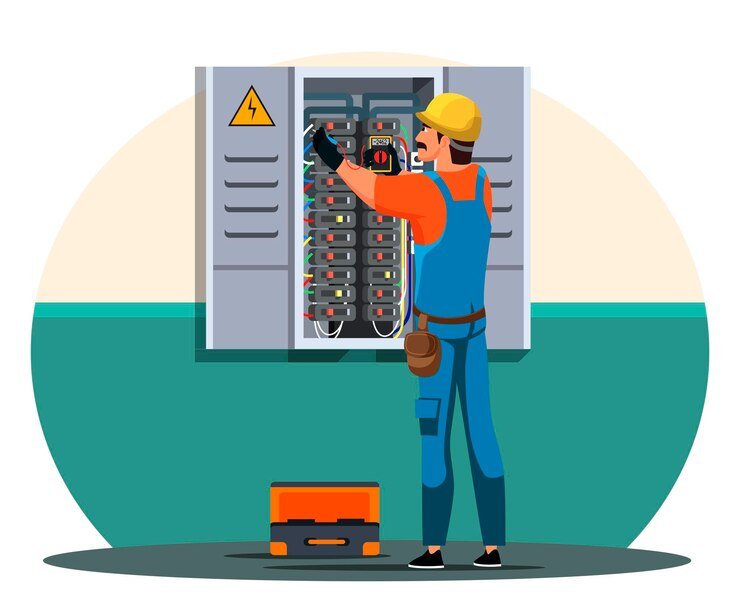How to Find a Break in an Underground Electrical Line: A Comprehensive Guide
Underground electrical lines are crucial to many modern infrastructure systems, powering homes, buildings, and other installations. While underground systems are designed to be more secure and less vulnerable to environmental factors than overhead lines, they are not immune to damage. A break in an underground electrical line can lead to significant disruptions and may present safety hazards. Detecting and fixing a break can be complicated, especially without the proper knowledge or tools.
In this article, we’ll explore different methods to find a break in an underground electrical line, answer some common questions, and provide a comprehensive guide that includes both DIY approaches and professional techniques. Understanding these procedures will empower homeowners, electricians, and contractors alike.
Common Causes of Breaks in Underground Electrical Lines
Before diving into detection methods, it’s essential to understand what can cause a break in underground electrical lines. Knowing these factors can help prevent future issues:
- Environmental Factors: Soil erosion, tree root growth, or freezing and thawing cycles can exert pressure on underground cables, leading to wear and breakage.
- Construction Activities: Excavation, digging, or landscaping without proper utility marking can accidentally sever underground cables.
- Animal Activity: Burrowing animals can sometimes chew through or damage electrical lines.
- Ageing Infrastructure: Over time, cables degrade due to insulation breakdown, which leads to potential shorts or complete disconnection.
- Electrical Surges: Power surges, whether from lightning or grid issues, can damage underground cables and cause them to fail.
Methods for Locating a Break in an Underground Cable
- Visual Inspection of Surface Indicators
While this may seem obvious, a quick visual inspection of the surface above the cable can provide early clues. Signs of surface disruption, such as uneven soil, recent digging, or animal burrows, could point to a likely area of damage. Additionally, if you notice any burn marks or unusual heat spots, this can indicate an electrical malfunction underground.
- Using an Underground Cable Locator
A cable locator is one of the most effective ways to locate a break in an underground electrical line. These devices come in two parts: a transmitter and a receiver. Here’s how they work:
- Transmitter: The transmitter sends an electrical signal along the cable.
- Receiver: The receiver is then used to detect the signal over the path of the buried wire.
If the signal suddenly stops or becomes weak, this is an indication that you’ve found the break. Modern cable locators can accurately identify the location and depth of the fault, making this a preferred method for professionals.
- Time Domain Reflectometer (TDR)
A Time Domain Reflectometer (TDR) is often employed for more complex diagnostics. This advanced tool sends a pulse along the wire and measures how long it takes for the pulse to reflect from the fault or break. The TDR can calculate the distance to the break by analyzing the time delay of the returned signal. While highly accurate, this method requires specialized equipment and expertise, making it more common for professional electricians or utility companies.
- Multimeter Testing
For a more accessible option, a multimeter can be used to test the continuity of the electrical line. Here’s how:
- First, disconnect the electrical line from its power source.
- Attach the multimeter probes to each end of the wire.
- Set the multimeter to measure resistance (ohms). A complete circuit will show a low resistance reading, while an open circuit (break in the line) will show infinite resistance.
Multimeters can help you pinpoint whether a break exists but may not tell you the exact location. This method is often used in combination with other techniques.
- Inductive Amplifier
An inductive amplifier, often used with a tone generator, can help detect faults in underground lines. The tone generator sends a signal along the wire while the inductive amplifier picks up the signal above ground. If the signal suddenly weakens or disappears, it indicates a potential break or fault in the wire.
This method is more suitable for locating breaks in shorter cable runs, such as those in residential settings, than large-scale industrial applications.
How to Find a Short in a Buried Wire
A short circuit occurs when the electrical current deviates from its intended path, often due to damaged insulation. To find a brief in a buried wire, follow these steps:
- Shut Off Power: Before conducting any tests, ensure the power to the circuit is turned off to avoid safety hazards.
- Use a Multimeter or Continuity Tester: As mentioned earlier, a multimeter or continuity tester can be used to check for continuity along the length of the wire. If there’s a short, the tester will detect it.
- Utilize a Fault Locator: Cable fault locators are specifically designed to detect shorts in electrical wiring. These devices will emit a signal that weakens or disappears near the shorted section of the wire.
Using these methods, you can isolate and identify the location of the short without extensive digging.
Steps to Find a Break in Earth Wire
An earth wire, also known as a grounding wire, is vital for safety in electrical systems. If you suspect a break in the earth wire, it’s crucial to address it immediately, as this can prevent electrical shocks or damage to appliances.
- Inspect Grounding Connections: Inspect the grounding points for any signs of corrosion, wear, or disconnection. Sometimes, simple reconnection at grounding rods or panels may solve the problem.
- Use a Ground Resistance Tester. Ground resistance testers measure the effectiveness of the earth wire. If the resistance reading is too high, the wire may be broken.
- Conduct a Continuity Test: As with standard electrical lines, a multimeter can perform a continuity test. A lack of continuity indicates a break in the wire.
How to Check for a Break in a Wire: General Tips
When attempting to find a break in any wire, the following tips will help ensure accuracy and safety:
- Safety First: Always ensure the wire’s power is turned off before conducting any tests.
- Use Proper Tools: Invest in a good-quality multimeter, TDR, or cable fault locator. These tools can save you time and effort.
- Sectional Testing: If the line is long, test the wire in sections by cutting and testing each part until you find the break.
- Documentation: Document the readings and locations if you’ve used locators or testers. This will help if you need professional assistance later.
Professional Help vs. DIY: When to Call an Electrician
While many of the methods mentioned here are DIY-friendly, there are cases where professional assistance is necessary. Consider contacting an electrician if:
- You need help locating the break using essential tools like a multimeter.
- The break is in a critical or high-voltage line.
- You suspect the problem involves more complex issues, like grounding or insulation faults.
- The damage is in a utility-owned line or shared property where local regulations require professional intervention.
Professional electricians have access to advanced diagnostic tools and can ensure repairs meet safety standards.
Final Thoughts
Finding a break in an underground electrical line can be challenging, but the process becomes more manageable with the proper knowledge and tools. Whether you’re using a simple multimeter or a sophisticated cable locator, identifying the location of the break is the first step toward restoring power and ensuring the safety of your electrical system.
Remember, safety should always be your priority when working with electrical systems. Don’t hesitate to call a professional if a task seems too dangerous or complex.
Frequently Asked Questions (FAQs)
- How to find a break in the underground cable?
You can locate a break using an underground cable locator or a Time Domain Reflectometer (TDR). A multimeter can also help check for continuity but won’t reveal the exact location.
- How do you check for a break in a wire?
A multimeter is the most accessible tool for checking a wire for continuity. If the resistance reading is infinite, there’s a break in the wire. You can also use inductive amplifiers and cable locators to find the precise location of the break.
- How to find a short in a buried wire?
To find a short, turn off the power and use a continuity tester or multimeter. A cable fault locator can help pinpoint the exact location of the brief.
- How do you find a break in an earth wire?
First, inspect grounding connections visually. Then, use a ground resistance tester to ensure the earth wire is functioning correctly. Finally, a continuity test will be performed to identify any breaks.
you may also read
Why You Need A Business Setup Consultant In Dubai For Your Company



